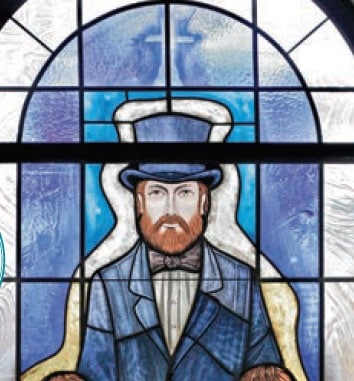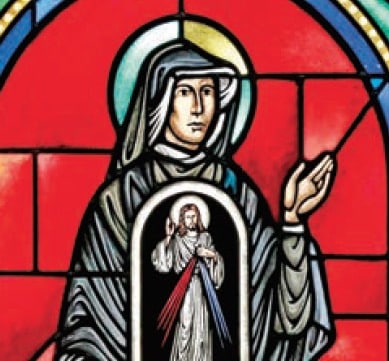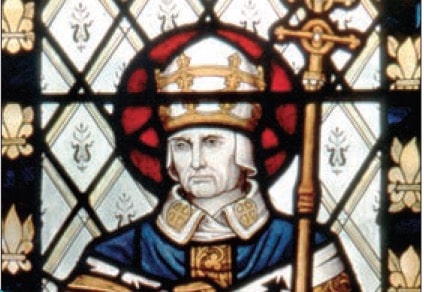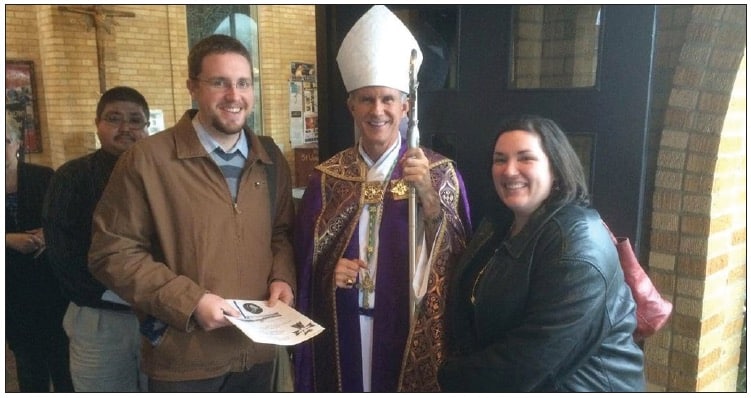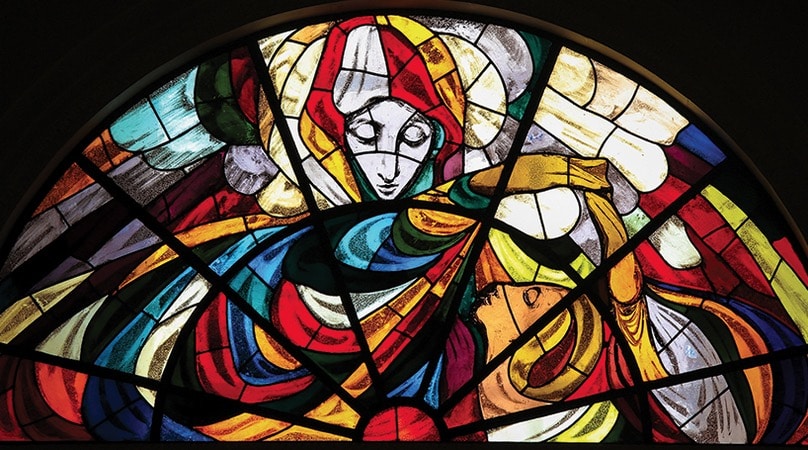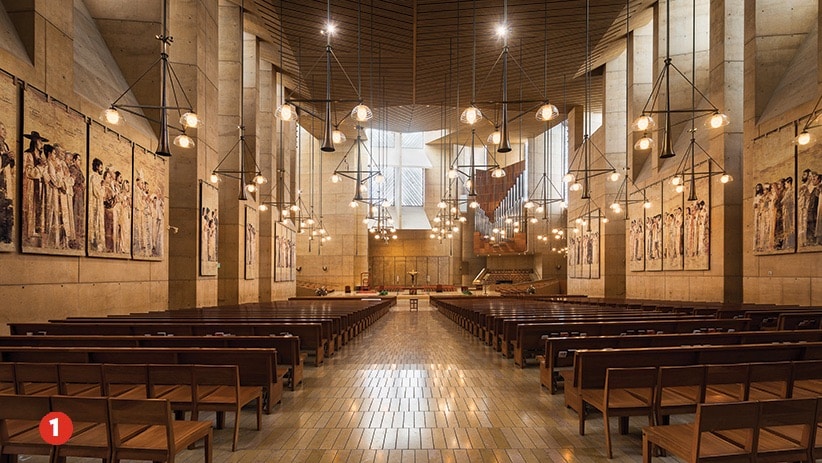Walking down a city street, who has not encountered a homeless man sitting on a sidewalk and begging for alms? Blessed Frederic Ozanam (1813-53) witnessed such a scene every day as a student in Paris when he walked to his classes at the Sorbonne. Frederic was in Paris between 1831 and 1836 taking courses in law and literature. The 1830s in Paris featured frequent uprisings in the streets as people fought for the kind of government they wanted. Great societal change was taking place, too, as the Industrial Revolution brought thousands of people into the cities looking for work, many of whom remained unemployed. The Church suffered, too, as anti-clericalism bred atheism and skepticism, particularly among university faculties and students. A cholera epidemic in 1832 exacerbated the already desperate situation in Paris, with more than 18,000 people dying from the disease. Victor Hugo’s novel, “Les Misérables,” which chronicles the same time period, is aptly named.
Faith into practice
What does one do in the face of such misery? Frederic had an answer, although he didn’t know it until an adversary challenged him. Frederic was born into a family that practiced their Catholicism. His parents, Jean Antoine and Marie Nantas, handed on the Faith to their son, not only by teaching him the creed but also by modeling charity. Both father and mother were well known for their efforts among the poor and sick in their parish. Jean Antoine was even recognized by the Emperor Napoleon for aiding people afflicted with typhus. For his part, Frederic received his parents’ instruction well. Despite a brief but intense period during his teens when he doubted Christianity, by the time he was a student in Paris, he had embraced the Faith.
| A Model of Faith |
|---|
|
During this Year of Mercy, we can imitate Blessed Frederic Ozanam’s concern for the poor and love of truth by:
– Helping out in a local soup kitchen or works of the Society of St. Vincent de Paul.
– Learning more about the Faith so as to be able to faithfully present it to those who speak out against it.
– Taking steps to prevent injustice against the most vulnerable in our communities.
|
The Sorbonne, where Frederic attended, was the vanguard in anti-clerical and atheistic thought. Students were not bashful in denigrating the Catholic Church, and even the faculty would attack religion in their lectures. Frederic refused to be intimidated. He inserted himself in the Catholic intellectual life of Paris, boarding in the home of Andre Marie Ampere, the famous mathematician who remained a son of the Church, and meeting with other leaders of the neo-Catholic movement. At school, Frederic organized a group of students who decided that whenever a professor spoke falsely about the Faith, they would issue an immediate challenge. He also started a discussion group open to all students, regardless of religious affiliation, who wanted to debate the issues of the time. It was during one of these sessions, when a student identifying himself as an atheist confronted Frederic about Christianity, that Frederic’s life took a dramatic turn.
The student issued an indictment against Frederic saying, “You are right, Ozanam, when you speak of the past! In former times, Christianity worked wonders, but what is it doing for mankind now? And you, who pride yourself on your Catholicity, what are you doing now for the poor?” The charge stung Frederic, and no doubt images of the homeless people he passed on the streets each day shot through his mind. What, indeed, was he doing? It was a fair question, and instead of being upset or defeated, he accepted the challenge.
Rising to the challenge
Frederic met with his circle of friends, and they considered what they could do. On the one hand, the needs of the poor in Paris were immense. On the other hand, Frederic and his companions were a small group of students with little resources. Nevertheless, Frederic issued his own challenge: “If we are too young to intervene in the social struggle, are we then to remain passive in the middle of a world which is suffering and groaning? No, a preparatory path is open to us. Before doing public good, we can try to do good to a few. Before regenerating France, we can give relief to a few of her poor.”
Frederic’s words were a kind of mission statement, so on April 23, 1833, he and his friends gathered the wood from their homes and delivered the supply to a poor widow who needed it for cooking and heat. With that one act of charity, the St. Vincent de Paul Society was inaugurated, and it has continued in service ever since, not only in France but also worldwide. (Frederic had great respect for St. Vincent, who helped the poor in Paris in the 17th century.)
More students joined Frederic’s little band, and they went out to the streets to find people in need. Early on, Frederic sought the advice of Rosalie Rendu, a Daughter of Charity who was already serving Paris’ poor in the worst slums. She taught the young students how to organize and to rely on each other’s unique gifts in order to provide better service. She also impressed upon them the dignity of the poor and the need to treat them as they would Christ.
Justice serving mercy
Frederic was an exceptional student, not only under Rosalie but also at the Sorbonne. In time, he completed two doctorates, one in law and one in foreign literature. He would go on to have a successful teaching career. He married Amelie Soulacroix in 1841, and together they had a child, Marie, in 1845.
Frederic led a very full, active life. Yet his busy life did not interfere with his dedication to the poor. Frederic applied the lessons from Rendu to his new society, and he began to organize more and more chapters that served the poor in their respective areas. He continued to make personal visits to the needy, but with his background in law, he also began to champion workers’ rights. His vision always remained firmly rooted in Gospel values: “Charity is the Samaritan who pours oil on the wounds of the traveler who has been attacked. It is justice’s role to prevent the attack.”
The St. Vincent de Paul Society that Frederic started in 1833, and that continues today worldwide, has seen amazing growth over the years. At his death in 1853, the society numbered 15,000 people in 29 countries, with 900 conferences in France alone. In 2015, membership had grown to over 1 million in 142 countries. Members remain close to their roots, too, emphasizing that charity should be done person to person. Ten to 12 people make up each local conference, which enables home visits to be conducted by neighbors or fellow parishioners. The personal service is grounded in two main principles: continuing prayer and the conviction that through the poor, one meets Christ. Following Frederic’s example, members also engage in the effort to create a more just society as their talents enable them.
Blessed Frederic Ozanam is a wonderful model to ponder and follow as the Catholic Church celebrates the Year of Mercy. He is an imitator of Christ, who, as Pope Francis says in Misericordiae Vultus (“The Face of Mercy”), “went out to everyone without exception,” meeting people in their need and helping them (No. 12). Pope Francis continues, “In this Holy Year, we look forward to the experience of opening our hearts to those living on the outermost fringes of society: fringes modern society itself creates. How many uncertain and painful situations there are in the world today! How many are the wounds borne by the flesh of those who have no voice because their cry is muffled and drowned out by the indifference of the rich. … May we reach out to them and support them so they can feel the warmth of our presence, our friendship and our fraternity!” (No. 15).
Frederic shows the way to respond to the pope’s words: It’s not, as one might think, to join the local St. Vincent de Paul Society, although that would be a very good thing to do. Frederic’s message is this: In whatever situation we find ourselves, with whatever gifts we have at our disposal, we can do something. And whatever we do, even if it’s bringing some kindling to a widow in need, if it’s done out of love of God and neighbor, then it will produce fruit a hundredfold.
David Werning writes from Virginia.

